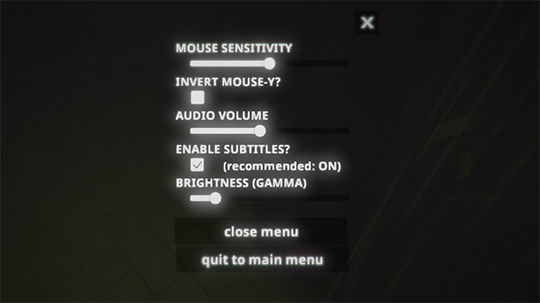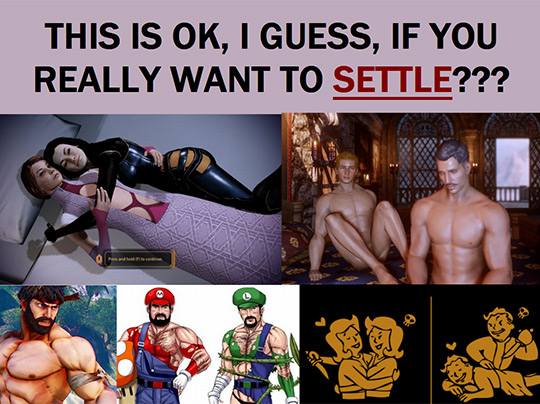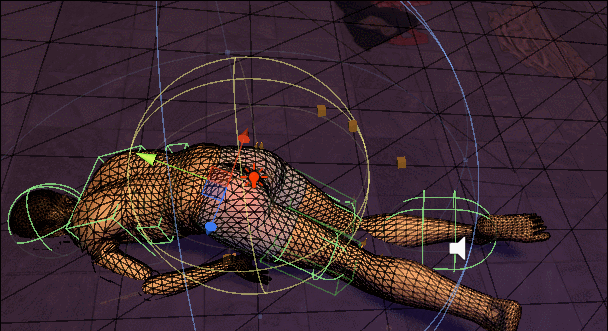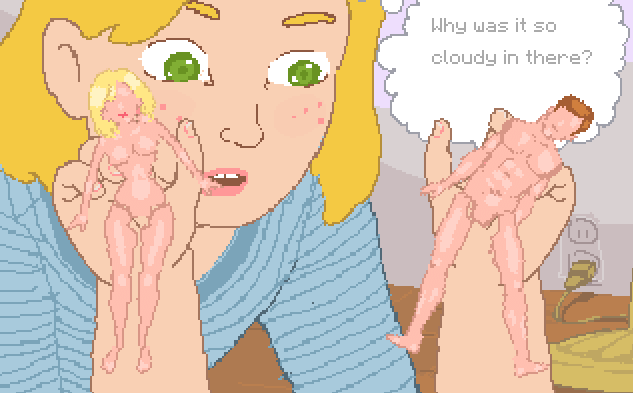This post vaguely spoils random bits of Firewatch and The Witness. I wouldn't worry about it.Only a few years ago, hiking games (first person games with a focus on traversing large naturalistic landscapes) were rather fringe. Early indie masterpieces like
Proteus and
Eidolon abstracted the landscape into pixelated symbols, with a special interest in simulating weather and wildlife to make it feel real. But it took "mid-period" hiking blockbusters like The Vanishing of Ethan Carter, Everybody's Gone to the Rapture, and Dear Esther (2012 remake) to monetize the genre with all their glossy near-photorealistic graphics.
Now we are entering a later period of hiking games, epitomized by The Witness and Firewatch's less realistic visuals. It represents these environment artists finally asserting their control over a project and their identities as artists, within older traditions of gardening and landscape painting. To better understand this latest shift, let's think about the social and technical history of the environment artist in 3D games.
![]() |
| What we notice: Hot Ryu, ass-slapping. What we ignore: the background. |
The rise of the environment artist is kind of recent. Consider the pre-indie-moment days of early-mid 2000s, when the vast majority of popular threads on
Polycount (arguably the biggest and most popular game art community) were by 3D character artists.
Pretty much everyone wanted to be a character artist. The more aspirational character artists usually got this advice from the experienced artists:
- "study more anatomy, bodies don't do what you think they do"
- "don't rush into detail, fix your basic shapes, your design makes no sense"
- "you may never get good enough to get hired in AAA as a character artist; consider becoming an environment artist instead, which studios need more of"
Character artists occupied a special place of prestige. Games culture fawns over Hot Ryu's ass, or
Nathan Drake's detailed stubble, not the authentic scratches meticulously etched on DirtyGreenMetalDumpster #16 behind Mr. Drake. Per asset, developers generally budget much more processing power and resources to characters. Character artists are allowed to show-off, and their work prominently features in marketing materials. Developers and engines further institutionalize this bias with "cinematic effects" like depth of field, which conveniently blurs the background behind characters in cutscenes -- or consider "competitive" games that let you turn off the environment entirely and play in a basic spartan stage. This is all part of a conscious branding strategy by AAA,
to require characters at the forefront of their branding. The environment cannot be the "star." We wouldn't want that dumpster to overshadow Nathan Drake's dynamic chest hair physics flapping in the wind!
This is the conventional wisdom: characters are "expensive" and deserve to be, but environments aren't and don't.
To a certain extent, I think the 3D game art community's bias against "environmental art" as "lower" than character art stemmed partly from Polycount's tradition and history as a Quake character skins website.
But this bias also came from the division of work in the game industry. Environment art was treated like an odd-job that random artists did. More often, level designers made environment art as part of their jobs. Many of the most successful level designers working in early 3D engines like Doom / Quake / Unreal did their own modeling, texturing, and lighting, using integrated in-engine building systems like sectors or BSP. That was simply how those game engines worked.
While I'm sure some studios employed dedicated environment artists, the role wasn't really widespread until game engines and better hardware let level designers ignore the specifics of construction. 3D game engines began moving toward a "modular" pipeline where dedicated environment artists built prefabricated "modules", and then level designers would slot the modular tiles into place. As this happened, many level designers I know from that generation, like
Philip "Blaz" Klevestav,
Thiago "Minos" Klafke, or the legendary
Nicolas "Sparth" Bouvier, were suddenly forced to pick whether they wanted to be artists or designers, and they decided to specialize as artists. (Though some level designers known for their art, like the famous Doom modder
Iikka "Fingers" Keränen, have also stuck with level design.)
(For more info on this, see my GDC 2015 talk about
"Local level design, and a history / future of level design" -- and to hear complaints about this workflow, see Joe Wintergreen's
"Hypothesising Negative Effects of Ubiquitous Modular Mesh Based Level Design")But I feel like character art is getting a bit less prestigious these days, and we can blame the new AAA technologies and workflows for character art emerging around 2014. Why study how to sculpt a human arm and how cloth drapes on an arm, when you can just grab some body scan data and simulate the garment in Marvelous Designer and texture it in Substance Painter with a few clicks? And now it might get even easier --
I'm having a lot of fun with Mixamo Fuse, which is a free MMO character creator without the MMO. (Anyone can now look like a 2014 FPS very easily.) Basically, character art was so expensive that a lot of people wanted to make it cheaper, so now a lot of tasks can be automated. The generated results can still be pretty substandard compared to the handmade work of a master, but the fact that you can compare them at all, is kind of shocking. There's always been jokes about a "Make Art" button on tools, and this isn't that far from it.
Meanwhile, environment art has been pretty comfortable with automation for a while. Very well-known tools like World Machine can generate entire continents within minutes, and the popular SpeedTree middleware can cover that world in forests. So much environment art in your average realistic FPS from 2000-2010 involved going to CGTextures.com (now just "
Textures.com"!) and downloading copious amounts of photosource to tweak in Photoshop. The best environment artists, of course, were still skilled at painting and sculpting, but for a long time this production work hasn't always felt like traditional painting or sculpting -- it hasn't felt like "Art" for a while.
Well, until now.
If I had to sum up The Witness and Firewatch, it would be,
"these games give a shit about trees."We can unpack a lot of techno-capitalist reasons why environment artists like trees in games. Rocks and houses seem kind of like solved problems, but complex foliage always requires some imagination, enough to merit
its own "fuck yeah video game foliage" fan tumblr. There are so many
different schools of thought about making 3D foliage, and this always has to be balanced with sharing performance with characters and AI. (Fortunately, both games have neither.)
Sculpting trees is also the kind of skill that demands a lot of classical observation and skill. It's still pretty difficult to 3D scan a whole tree, due to the sheer complexity and scale, versus having a person walk into your specialized studio setup and try to stand still. But once you sculpt and finish a few of these trees, then you can copy-and-paste them to make an impressive forest. (In contrast, you can't make endless copies of a house, it'll feel too obvious and cheap.) If you want a pretty reliable indicator of what year a game was released, just compare the technique and technology in the trees. Trees are basically the Nathan Drakes of environment art.
So, these games without characters are about letting the environment artists show off. The character art, what relatively little there is, acts as support to ground your presence in this place.
So here's a question -- what are these games' attitudes toward trees and nature?
I think Firewatch yearns for a studied effortlessness. It takes place in a slightly overgrown wilderness that isn't really wild if you think about it, but wild enough to let you humor yourself that you are in an untainted pocket of nature preserved in its natural state. There's a concern about authenticity and realness here. "This is what being in a remote watchtower feels like!"
Every space in Firewatch must feel lived-in and real, but in that weird game-y "environmental storytelling" kind of way. The clutter feels arranged by a professional clutter designer, a pile of poignant junk posed just right, in that peculiar way that we're supposed to notice and mark as "Narrative" -- but much like the implausibility of Gone Home's characters constantly pouring out their deepest thoughts within countless letters and tapes in a fever of ludonarrative hysteria, we players suspend our disbelief and accept this all as a mode of Video Game Storytelling.
Basically, Firewatch's world feels fake in a way that contemporary players are pretty accustomed to, so we don't mind.
But unlike Gone Home, where all the events have already occurred and the player must trace a chronology after the fact, Firewatch invites the player to personalize the story. Players can keep clutter objects of their own, customize other items (journals, letters, maps, broken windows), and take nature photos with an in-game camera. It makes sense as a natural-feeling progression in design from Gone Home.
(One possible idea for future advances in clutter storytelling: have disembodied NPCs, in turn, react to your selection or assemblage of objects. "NPC: dear player, I noticed you put my gift in the trash can. I don't like that." Complete the interactive loop; the narrative equivalent of Zendo.)Firewatch even mixes in
some procedural storytelling AI tech I've been yelling about for a while, as well as a short Twine-inspired prologue, some subtle feminist commentary, and hints of Gay Stuff(TM), all enabled by some modest tech industry funding (co-publisher Panic Inc.) and ex- dev expertise (ex-Telltale, ex-Double Fine, ex-2K, ex-ex-ex...) working on widely available game engine middleware. Did I mention it's only 2-4 hours long?
Firewatch is a game that only could've been made recently, circa 2015 - 2016, conceptually / creatively / economically / technically.
And The Witness... kind of isn't.
![]() |
| Want to read any defenses of Thomas Kinkade's boring art? I'd recommend Joan Didion's -- she argues every window is glowing as if on fire. She means it metaphorically, but I'm more persuaded by the idea of literal fire. |
The Witness, with its artificial segmentation of different areas, feels more like a garden or a theme park. In fact, many of the spaces in The Witness are specifically presented as cultivated gardens. Every branch and leaf is an instrument for Jonathan Blow's purpose, his island that he is graciously allowing you to visit. It feels like a puzzle-resort (there's literally a section of the game that is a resort area) and you are just a visitor in this virtual Versailles.
But a lot of that ideology just feels so "tacky." No one builds gardens in spirals anymore, no one plants 20 different colors of trees within the same vista. It's unfashionable. To be very uncharitable, the Witness is basically an explorable
Thomas Kinkade painting filled with hundreds of hidden object puzzles and sudoku puzzles, right down to the countless glowing windows and panels.
This conceit works until it loses its nerve, and makes the huge mistake of compromise -- of trying to bring a human element back into this thing that isn't about people. It does this in the least subtle way possible, literally with YouTube videos and podcasts of Scientific Rational Men talking about science and Spiritual Emotional Women talking about meditation. For all of Jonathan Blow's talk of letting players put it all together for themselves, it's weird how this aspect of the game begs to explain itself. In a sense, these voices are some of the worst character art in the history of games.
Rule number one, of Thomas Kinkades or hiking games, is to avoid close-ups of people. The
dozens of statues in The Witness feel desperate for meaning and importance, and worst of all ignorant of the lukewarm attempts at "statue storytelling" in AAA games. Only the oldest sculpture gardens have classical stone statues of people in them; if you are trying to build a new kind of sculpture garden but use old techniques, it's going to feel very kitsch and irrelevant.
Firewatch felt fake in a natural way. The Witness feels fake in a jarring way.
![]() |
| Myst used to seem impossibly realistic; now it looks cartoonishly clean, like Team Fortress 2 |
This feeling, of being unplugged from contemporary game culture as a whole, is probably on purpose. The Witness is the same core concept from 1993's Myst, packed with 20 different puzzle mechanics that demand at least 25 hours of play to achieve a "first ending", self-funded for years from the excess of an indie business model that no longer exists, hand-built on a homemade game engine and toolset programmed in C++, with a supposedly "apolitical" narrative agenda that doesn't care about race, gender, or sexuality. It even sells for $40, the standard US retail PC game price from the 90s. The Witness is profoundly Uncool.
So let's be nice and judge it more on its technical merits: this game impressively functionalizes environment art and technology. Tree models are puzzles, real-time projected shadows are puzzles, specular masks are puzzles, additive color light sources and blending modes are puzzles... UVs, shaders, and screen space are puzzles. The environment artist basically functioned as a game designer here.
It's kind of a beautiful reversal from before, when environment art used to be a secondary thing that designers did. Now in The Witness, level design is more like a secondary thing that environment artists do. In Firewatch's case, much of the storytelling is tied up in the environmental assets, so that the environment artist also doubles as a narrative designer and writer.
Who decides what a game is? Traditionally, we've bestowed auteurship (of, say, Doom) upon lead programmers (John Carmack) or designers (John Romero) but rarely the artists ("Adrian Carmack", whoever that is?)... with The Witness and Firewatch, that thinking increasingly makes no sense, considering all the weight that environment art is made to carry.
The Witness: a game by
Luis Antonio,
Orsi Spanyol,
Eric A. Anderson.
Firewatch: a game by
Jane Ng and
Olly Moss.








































































